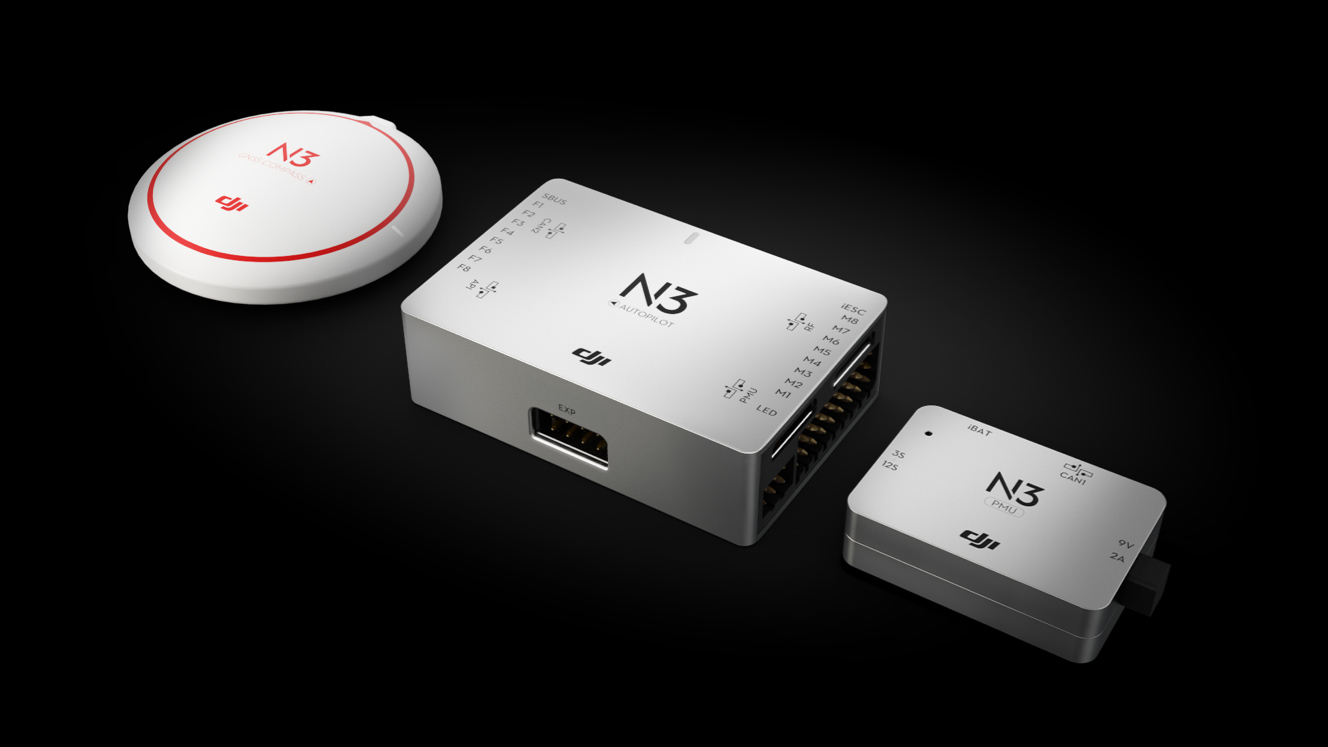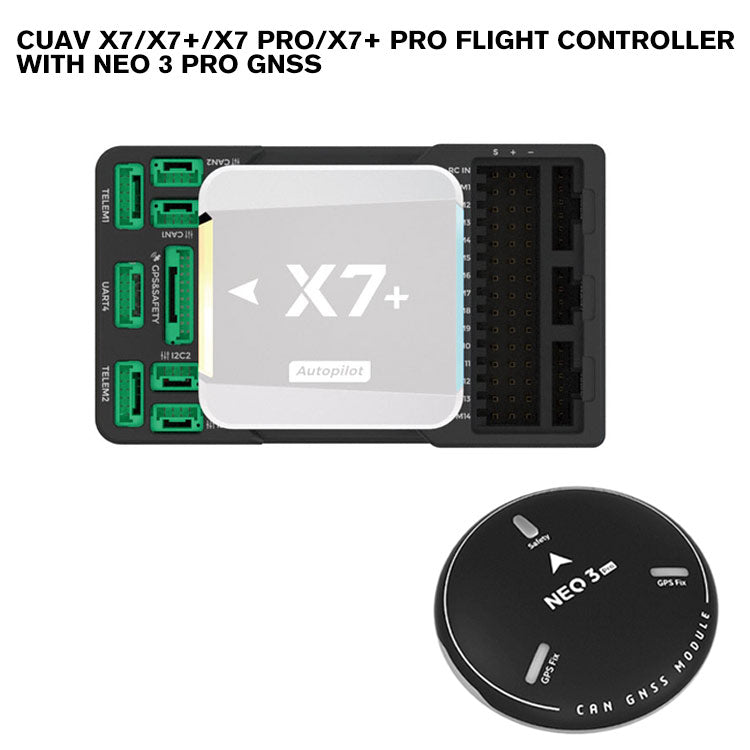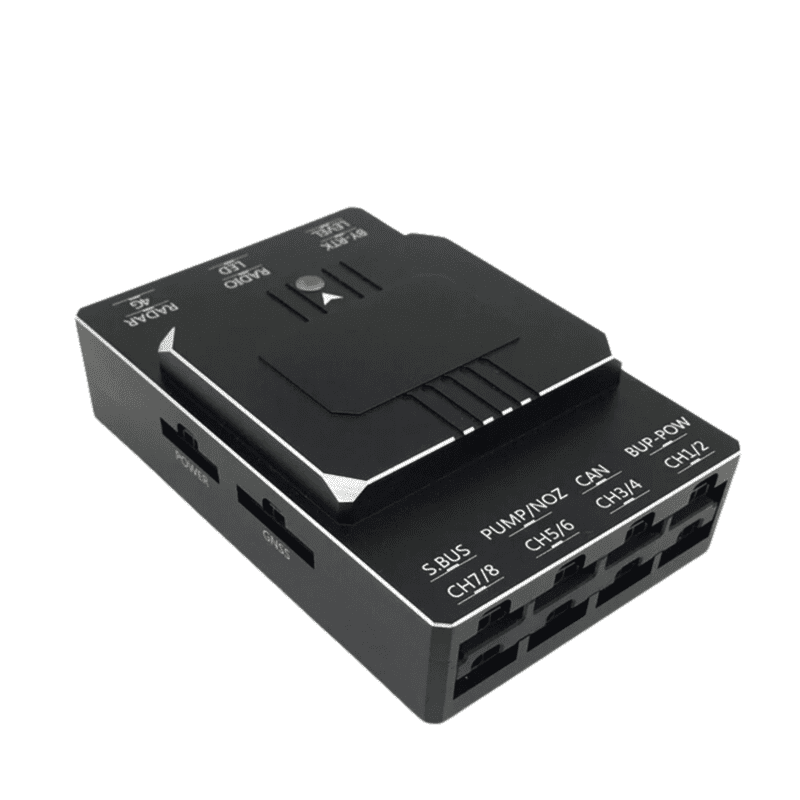Unrivaled Accuracy: SparkNavi Drone Flight Controller and GNSS/INS Made in Taiwan
Wiki Article
Discovering the Function of Drone Flight Controllers in Enhancing Flight Security and Navigating Performance
The advancement of drone technology has actually substantially raised the significance of trip controllers, which function as the mind of these airborne automobiles. By incorporating real-time data from a variety of sensing units, trip controllers boost trip stability and navigation efficiency, making certain that drones can run efficiently also in complex atmospheres. This conversation will certainly discover the key components that contribute to these enhancements, along with the effects for the future of independent trip. What innovations lie in advance that could additionally transform the capabilities of drone trip controllers?
Understanding Trip Controllers
Flight controllers are essential components in the performance of drones, acting as the brains that manage and support trip procedures. These innovative tools procedure data from different sensing units, including accelerometers, gyroscopes, and GPS, to guarantee that the drone maintains its desired flight course. The trip controller interprets this information and carries out commands based on pre-defined formulas, making it possible for the drone to reply to ecological modifications, such as wind or obstacles.The primary feature of a trip controller is to maintain stability during trip. It accomplishes this by making real-time adjustments to the drone's electric motors and control surfaces, making sure balance and control. In addition, contemporary flight controllers integrate advanced features such as waypoint navigating, allowing for automated trip paths and boosted operational performance.
Comprehending the style of flight controllers is vital for both hobbyists and professionals. As innovation breakthroughs, flight controllers have actually become much more small and qualified, integrating synthetic intelligence to adapt and improve decision-making processes to complicated flight circumstances.
Key Elements of Trip Stability
Accomplishing ideal trip security in drones relies on several crucial parts that function in performance to make certain regulated and smooth procedures. Central to this stability is the flight controller itself, which processes data from various sensors to maintain the desired flight perspective. This consists of accelerometers and gyroscopes that gauge movement and positioning, permitting real-time adjustments to the drone's setting.One more essential component is the digital rate controllers (ESCs), which regulate the power delivered to the electric motors. By finely tuning motor rates in reaction to trip controller commands, ESCs aid keep balance and counteract disruptions triggered by wind or abrupt motions.
Furthermore, the design of the drone's frame plays a critical role in trip security. A well-structured frame reduces resonances and enhances the overall aerodynamic account, contributing to smoother trip qualities. The combination of sophisticated formulas within the trip controller aids in predictive adjustments, making sure a receptive and adaptable flight experience.
Together, these parts create a natural system that enhances a drone's security, enabling accurate handling and boosted performance in various flight conditions.
Navigating Effectiveness Strategies
Effectiveness in navigation is crucial for optimizing drone operations, especially in complex settings. Reliable navigation strategies improve the capacity of drones to traverse difficult terrains and stay clear of obstacles, thus boosting functional effectiveness and safety and security.One popular strategy is the implementation of sophisticated general practitioners and inertial measurement systems (IMUs) that provide accurate place tracking and positioning information. These innovations permit drones to compute optimum flight courses in real-time, thinking about various aspects such as wind problems and potential challenges.
Another technique includes the usage of formulas for path preparation and optimization. Formulas such as A * and Dijkstra's formula can be deployed to identify one of the most reliable course while reducing power consumption and trip Read Full Report time. Furthermore, integrating device understanding versions can make it possible for drones to adaptively find out from their settings, improving navigation abilities with experience.

Effect On Autonomous Drones
The assimilation of innovative navigating strategies has actually greatly changed the capabilities of autonomous drones, allowing them to operate with greater autonomy and precision. SparkNavi drone flight controller and GNSS/INS made in taiwan. These enhancements are mostly associated to advanced flight controllers that utilize real-time information processing and sensor fusion, allowing drones to browse intricate atmospheres perfectlyThe impact on autonomous drones extends beyond mere navigation; it incorporates enhanced challenge evasion, enhanced security throughout vibrant conditions, and increased goal integrity. By leveraging algorithms that incorporate machine understanding and artificial knowledge, drones can adapt to changing scenarios, making informed choices that enhance their flight courses while minimizing dangers.
Furthermore, the application of robust trip controllers has actually helped with the execution of complicated jobs, such as aerial inspections, distribution solutions, and agricultural surveillance, with very little human treatment. This capacity not just improves procedures however also lowers human mistake, consequently improving general safety.
Because of this, the operational extent of autonomous drones has actually expanded significantly, making them indispensable devices in different sectors. Their ability to do successfully in diverse situations emphasizes the crucial duty that advanced trip controllers play fit the future of unmanned aerial systems.
Future Trends in Flight Control
Frequently, developments in flight control modern technology are poised to redefine the landscape of drone procedures in the coming years. Arising fads indicate a considerable change towards improved artificial intelligence (AI) combination, making it possible for flight controllers to refine real-time information a lot more successfully. This evolution will facilitate improved decision-making capabilities, permitting drones to adjust to vibrant ecological conditions autonomously.Moreover, the implementation of artificial intelligence formulas is anticipated to boost predictive maintenance, thereby minimizing downtime and expanding the lifecycle of drone parts. This aggressive strategy to upkeep will certainly be essential as drone applications increase throughout numerous sectors, from farming to logistics.

.png)
Last but not least, developments in secure communication procedures will address safety and regulatory worries, guaranteeing that drones can run flawlessly in overloaded airspaces (SparkNavi drone flight controller and GNSS/INS made in taiwan). Collectively, these fads aim in the direction of a future where trip control systems are not just smarter and a lot more effective but also capable of operating securely in a progressively integrated airspace
Conclusion
In conclusion, drone flight controllers are indispensable to enhancing flight security and navigation performance through the advanced handling of sensing unit information. By preserving optimum trip attitudes and employing sophisticated algorithms for path optimization and challenge evasion, these controllers significantly contribute to the autonomy and operational security of drones. As innovation continues to develop, additionally developments in flight control systems are anticipated, promising improved performance and increased abilities in the realm of unmanned aerial automobiles.
By incorporating real-time data from a variety of sensing units, trip controllers improve flight stability and navigation efficiency, ensuring that drones can run efficiently also in complicated environments.Flight controllers are essential components in the performance of drones, offering as the brains that handle and support flight operations. In addition, contemporary flight controllers image source integrate advanced features such as waypoint navigation, allowing for automated trip courses and enhanced functional performance.
Central to this security is the flight controller itself, which processes information from different sensors to maintain the desired trip mindset.In conclusion, drone trip controllers are indispensable to improving trip stability and navigation performance with the sophisticated processing of sensor data.
Report this wiki page